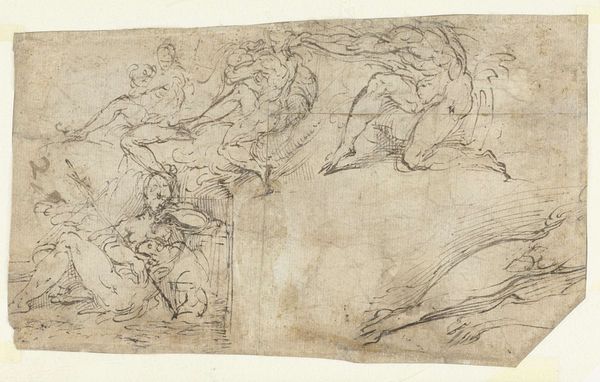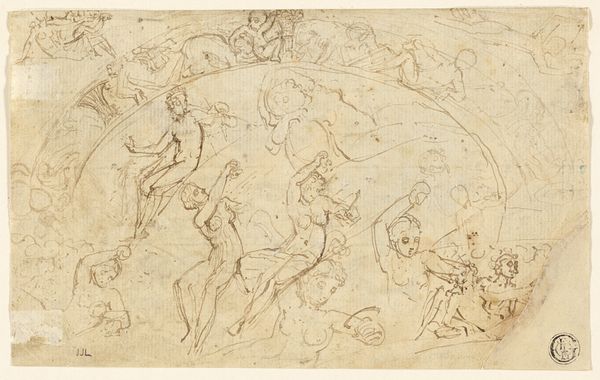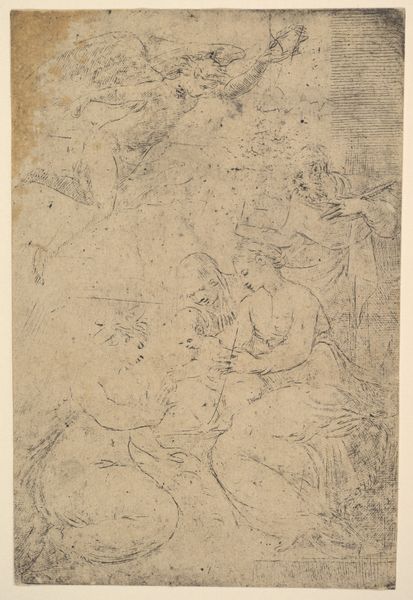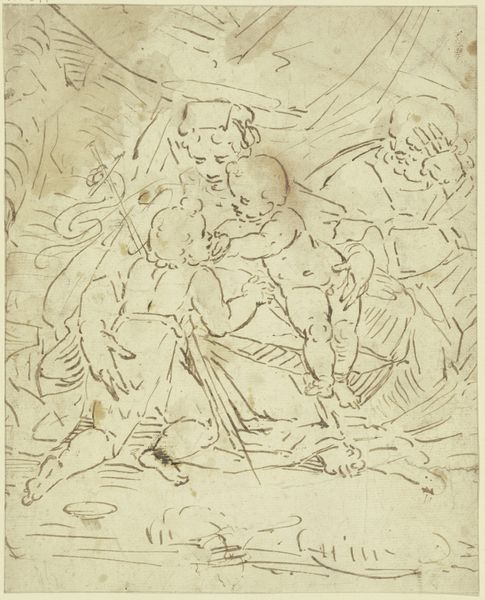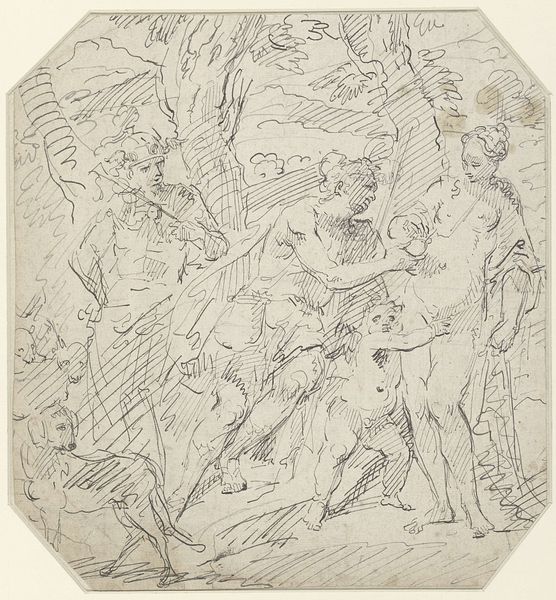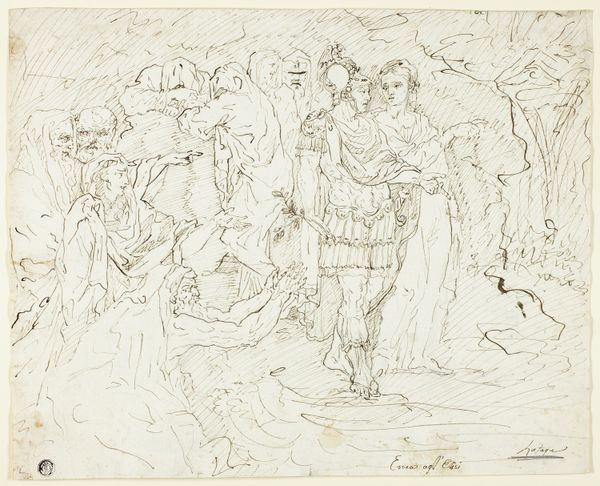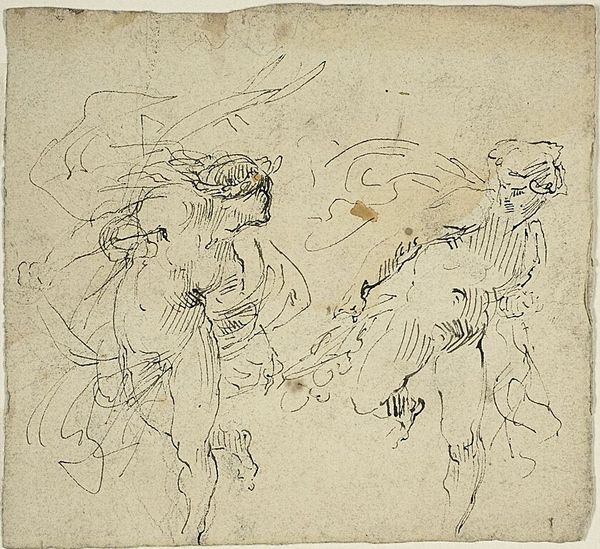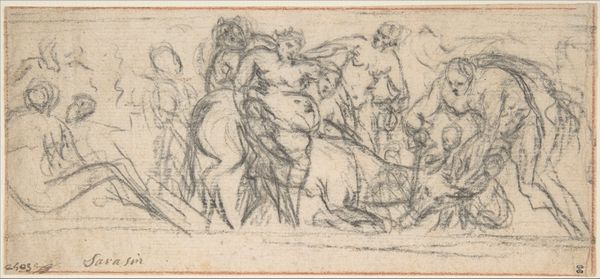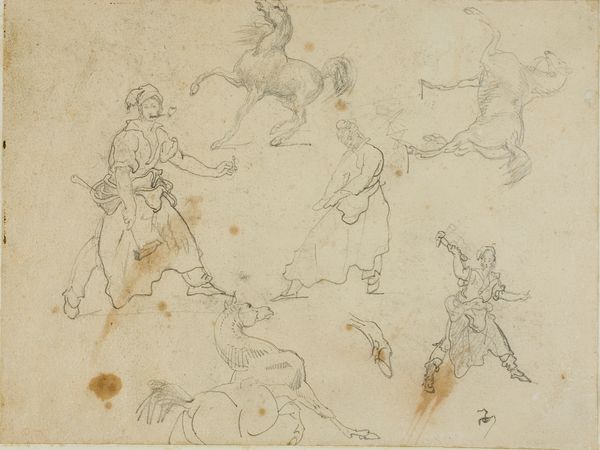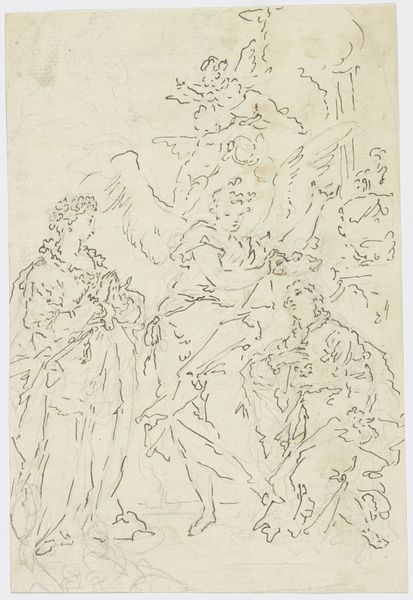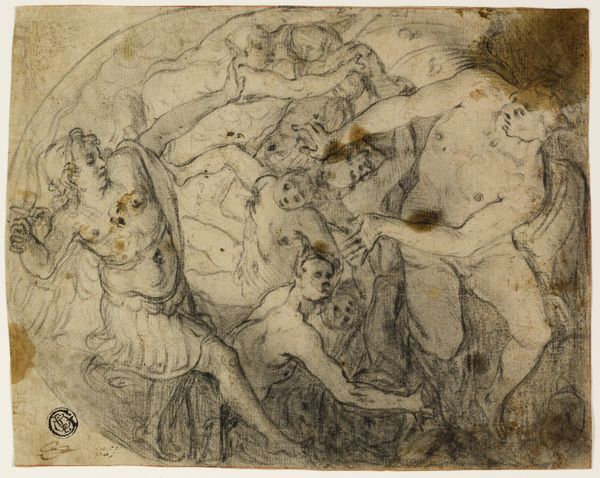
drawing, print, fresco
#
drawing
#
allegory
# print
#
mannerism
#
figuration
#
fresco
#
11_renaissance
#
academic-art
#
decorative-art
Dimensions: 5 13/16 x 15 1/8 in. (14.8 x 38.4 cm)
Copyright: Public Domain
Editor: Here we have a drawing titled "Frieze with Acanthus Rinceau with Grotesques," created sometime between 1550 and 1599. The artist is anonymous, and the work can be found at The Met. It feels very ornate, almost overwhelming with detail, but something about the mythical figures is compelling. What do you see in this piece? Curator: Indeed. The grotesque figures entwined within the acanthus scrollwork immediately evoke a world where boundaries blur—animal and human, sacred and profane. Think about the function of such a frieze. What psychological impact might such a combination of decorative foliage and fantastical creatures have on the viewer within that architectural space? Editor: That's interesting. I hadn't thought about the psychological impact. I suppose it’s meant to impress, or perhaps even subtly intimidate? Curator: Possibly. But also, perhaps to transport. The "grotesque" style, popular in the Renaissance, was often found in grottoes, spaces meant for contemplation and escape. The hybrid creatures – consider the Sphinx or even gargoyles - may remind us that transformation and transition is always possible, not only beautiful ideals but darker instinctual aspects as well. Do the figures here seem more aligned with lightness or darkness, do you think? Editor: I see what you mean! I was so focused on the detail, I missed how they contribute to this bigger idea about transformation. I am struck by the figures holding objects in the composition. What do these imply? Curator: They present or mediate some meaning that is hard for us to completely understand. They serve as potent carriers of cultural memory. Seeing such common themes gives us insight into understanding those historical communities and individuals who interacted with those symbols regularly. I am glad to have shared this observation. Editor: This conversation shifted how I understood not just this image, but what these iconographies do for cultural transmission. Thank you.
Comments
No comments
Be the first to comment and join the conversation on the ultimate creative platform.

